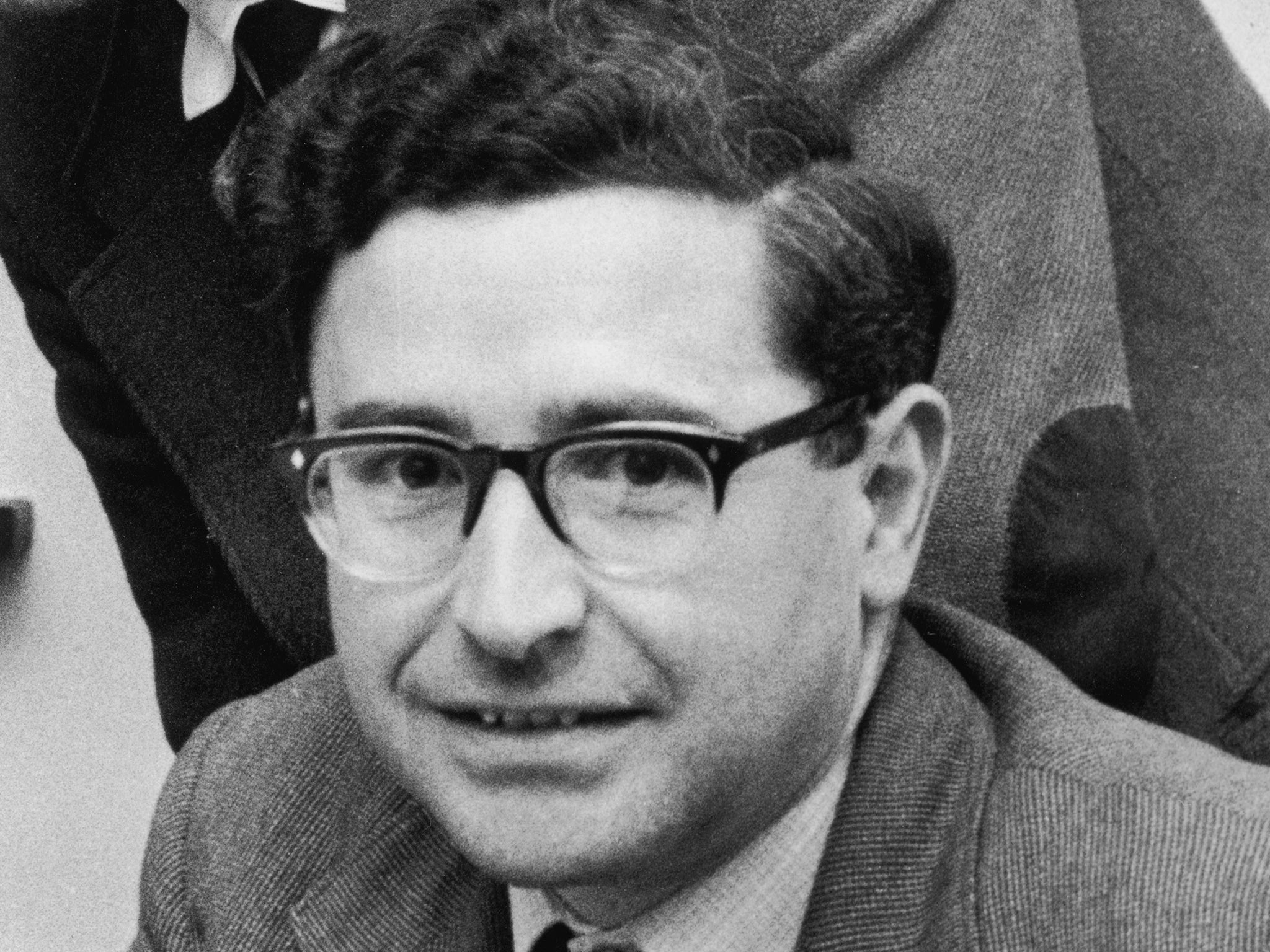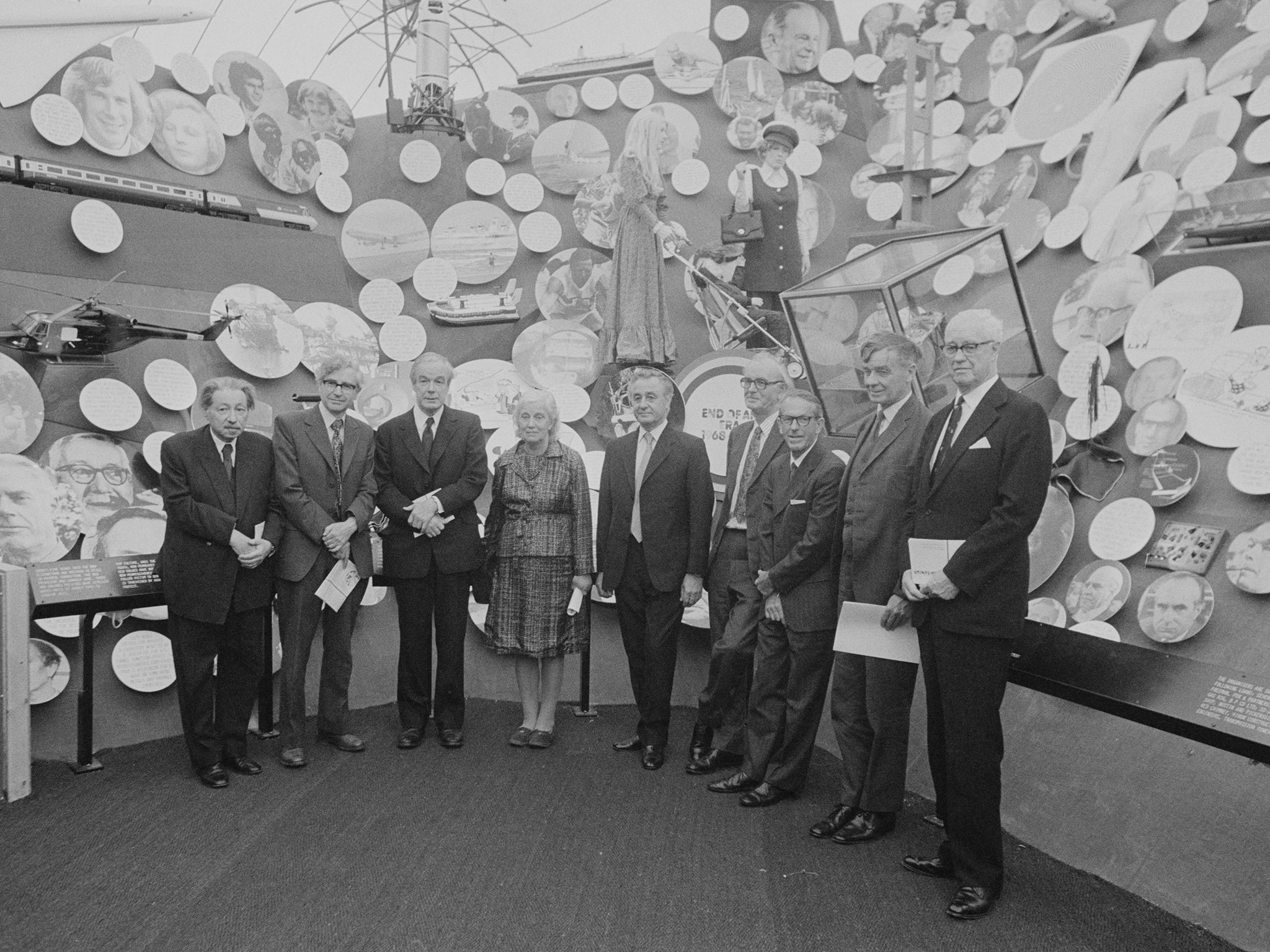Antony Hewish: British astronomer and Nobel prize winner
While working at Cambridge in 1967, Hewish designed and built an innovative radio telescope used to discover stars known as pulsars

Antony Hewish, a British astronomer and astrophysicist who designed and built the innovative radio telescope used to discover pulsars – dense, fast-spinning stars that emit sweeping beams of radiation – and was honoured with a share of the Nobel Prize in Physics for his role in their detection, has died aged 97.
His death was announced by Churchill College at the University of Cambridge, where he was an emeritus fellow. Dr Hewish was associated with Cambridge for his entire scientific career, and was working at the university’s Mullard Radio Astronomy Observatory (MRAO) when he and his research team detected the first pulsars in 1967.
Like celestial lighthouses, the stars send streams of radio waves or other radiation into the universe, rotating rapidly so that their beams appear to pulse like clockwork. Most pulsars are now understood to be neutron stars, the extraordinarily dense husks of collapsed supergiants. Their discovery ushered in a new era for 20th-century astronomy, helping scientists locate distant planets, search for gravitational waves and investigate the interstellar medium that fills the cosmos.
Along with his Cambridge colleague Martin Ryle, Hewish was one of the first two astronomers to ever win a Nobel prize. They were honored in 1974 for what the committee described as “their pioneering research in radio astrophysics”, with Hewish cited for playing a “decisive role in the discovery of pulsars”.
Yet the award sparked decades of arguments among scientists who said at least part of the prize should have gone to one of Hewish's graduate students, Jocelyn Bell. She helped build the radio telescope, operated the instruments, analysed the data and identified the first pulsars, for which she was later honoured with the 2018 Special Breakthrough Prize in Fundamental Physics.
Hewish never denied that Jocelyn Bell Burnell, as she became known as, made the initial pulsar observations. But he noted that he closely investigated the pulses himself, conducting detailed measurements to learn more about the signals, and created the telescope that made their discovery possible.
“When you plan a ship of discovery and somebody up the masthead says land ho, that’s great,” he said in a video interview that was featured in a recent New York Times documentary about Bell Burnell. “But I mean, who actually inspired it and conceived it and decided what to do when and so on? I mean, there is a difference between skipper and crew.”
Hewish had been studying rapid variations in radio signals when he built the Interplanetary Scintillation Array, a four-acre network of cables and copper wires that stretched across a field near Cambridge. As part of a search for mysterious radio sources known as quasars, the telescope recorded the signals of distant radio waves, which were registered on chart paper as crests and troughs.
Soon after the telescope was completed in 1967, Bell Burnell noticed an unusual squiggle, what she called a piece of “scruff”, that she traced to the constellation Vulpecula. “I wanted to understand what it was, and I ended up taking this problem to Tony. And he said that it was interference,” she recalled in the NYT documentary. Referring to herself in the third person, she added that Hewish “had one idea that Jocelyn had wired up the radio telescope wrongly, and it was something to do with that”.

As Bell Burnell told it, she kept studying the scruff, doing a more detailed analysis that revealed a string of pulses about 1.3 seconds apart. Once again, she called Hewish. This time he agreed it was a genuine signal, although its source remained unclear; unable to rule out an alien origin, they jokingly named their discovery LGM-1, for Little Green Man, according to a 2018 report in The Washington Post.
Bell Burnell soon discovered a second, third and fourth pulsing signal, suggesting they had discovered a new kind of star. The findings were announced in a February 1968 article in Nature, in which Hewish was credited first, followed by Bell Burnell and three other members of the research team.
Interviewed for the NYT documentary, Bell Burnell said Hewish “could have cited me more and didn’t” while presenting their findings at Cambridge. She added that while he became the scientific face of the pulsar discovery, she was interviewed merely for “human interest”, asked about the colour of her hair and the dimensions of her hips, waist and chest. “Tony just let it happen,” she said. “It was dreadful.”
When it came to the Nobel prize, however, she said Ryle and Hewish were fully worthy of the honour. When English astronomer Fred Hoyle asserted in 1975 that Hewish had won by claiming credit for Bell Burnell’s work, she responded by saying Hoyle had “drastically exaggerated the situation” and was “factually incorrect”.
“It doesn’t much bother me that my name wasn’t included,” she told The Guardian in 2009. “In those days, students weren’t recognised by the committee.”
By 1993, when a Nobel prize was awarded to pulsar researchers for a second time, that practice had apparently changed. The committee honoured both the professor overseeing the research, Joseph Taylor Jr, and his graduate student at the time, Russell Hulse.
The youngest of three sons, Antony – known as Tony – Hewish was born in Fowey, Cornwall, on 11 May 1924, and grew up in the coastal town of Newquay. His father was a banker, but Hewish showed an aptitude for physics while studying at King’s College boarding school in Taunton and enrolled at Cambridge in 1942 to study science.
Hewish was also a competitive rower, and in a 2008 video interview for Cambridge he recalled spending “afternoons practicing on the river when I should have been in the physics lab”. His grades suffered, and after his first year, he was dispatched to aid the war effort at the Royal Aircraft Establishment, a military research centre in Farnborough.
For most of the next three years, he helped develop a device to jam the radar of enemy aircraft, working with electronics and antennas that piqued his interest in radio astronomy. He also met Ryle, the head of the military’s radar countermeasures group, whose lab he joined after returning to Cambridge and graduating in 1948.
Hewish married Marjorie Richards in 1950. She later told the NYT that she was surprised when her husband won a share of the Nobel: “The entire prize, my husband would agree, should have gone to Professor Ryle. We expected him to get it, and sharing it has been totally unexpected as far as my husband is concerned.”
They had a son, a physicist, and daughter, a language teacher. Information on survivors was not immediately available.
After receiving his PhD in 1952, Hewish joined the faculty at Cambridge. He was professor of radio astronomy from 1971 until his retirement in 1989, and led the MRAO for six years at the close of his career. He also delighted in lecturing about physics to wide audiences, including at the Royal Institution in London.
“There is, I think, some special benefit for mankind in the realm of astrophysics,” he said at the conclusion of his Nobel banquet speech in 1974. “It is impossible to witness the interplay of galaxies without a sense of wonder, and looking back at Earth we see it in its true perspective, a planet of great beauty, an undivided sphere. Let us try and keep this image always in our view.”
Antony Hewish, astronomer, born 11 May 1924, died 13 September 2021
© The Washington Post


Bookmark popover
Removed from bookmarks